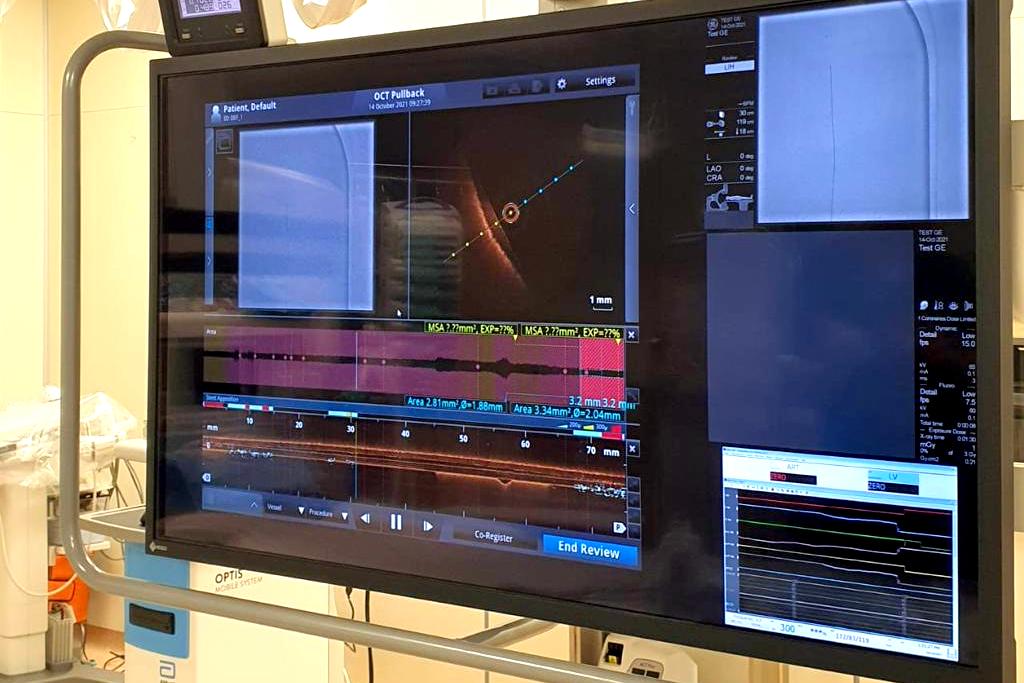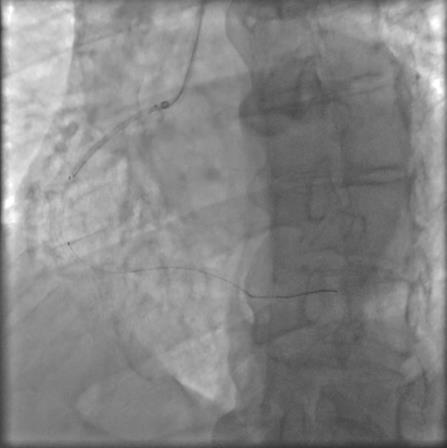
At the end of July, surgeons from the Department of X-ray Surgical Methods for Diagnosis and Treatment of Almazov Centre performed unique coronary stenting procedures without contrast medium.
Intravascular ultrasound imaging makes it possible to minimize and in some cases completely eliminate the use of contrast media, especially in patients with renal disease. The advantages of ultrasound imaging for coronary endovascular procedures have already been confirmed by the community of endovascular surgeons worldwide, but such technologies remain available only in large national centres of Russia.
Researcher of the Research Laboratory of Interventional Surgery Alexey Prokhorikhin emphasized the importance of the technique:
“Intravascular ultrasound can help us more accurately determine the topography of the coronary lesion and plan the surgery, correctly select the required size of the stent and place it, and all this became possible without injection of any contrast medium.”

Procedural stages of intravascular ultrasound-guided intervention
Right: Assessment of the degree and extent of coronary artery stenosis and artery diameter
Left: Placement of a coronary stent (indicated by red arrows) that completely covers the atherosclerotic plaque
“Patients with chronic kidney disease and coronary artery disease represent complex cases in terms of tactics. In the struggle to preserve the filtration function of the kidneys and later switch to hemodialysis, these patients are often denied endovascular treatment. Now they have the opportunity to safely treat coronary artery atherosclerosis at Almazov Centre,” explains Dr. Dmitry Zubarev.

Non-contrast ultrasound-guided stent placement (x-ray)
A standard radial artery access is used for endovascular intervention, thereafter, the nature, degree and extent of the coronary artery lesion are assessed using real-time intravascular ultrasound. Further, the stent is positioned also with intravascular ultrasound guidance, followed by a second scan to exclude dissections and an assessment of the degree and symmetry of stent expansion.
Needless to say, the technique has a number of contraindications and can only be used in patients with a certain anatomy of the coronary bed. Nevertheless, the development of the described method can gradually broaden the prospects for its use, while significantly reducing the volume of injected contrast medium, and thus make it possible to help patients with coronary artery disease, even at the pre-dialysis stage of chronic kidney disease.
